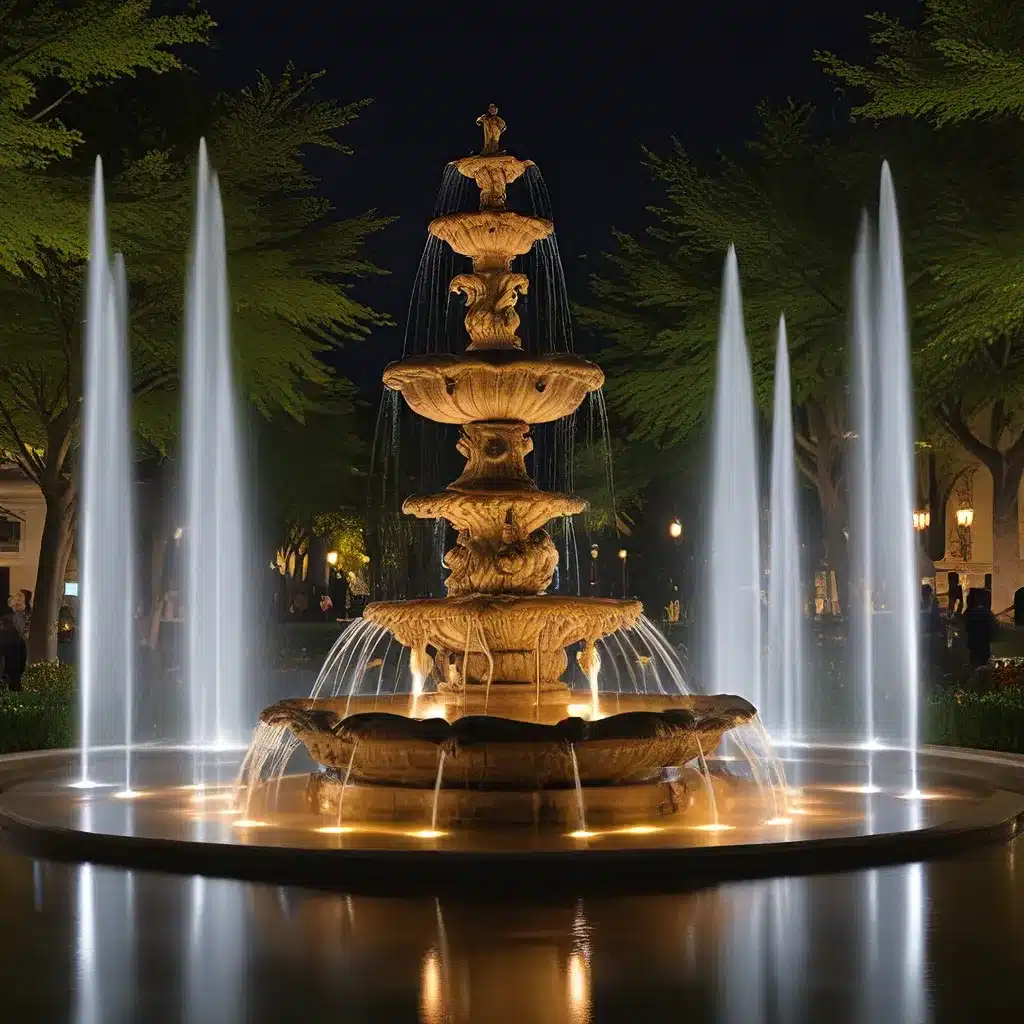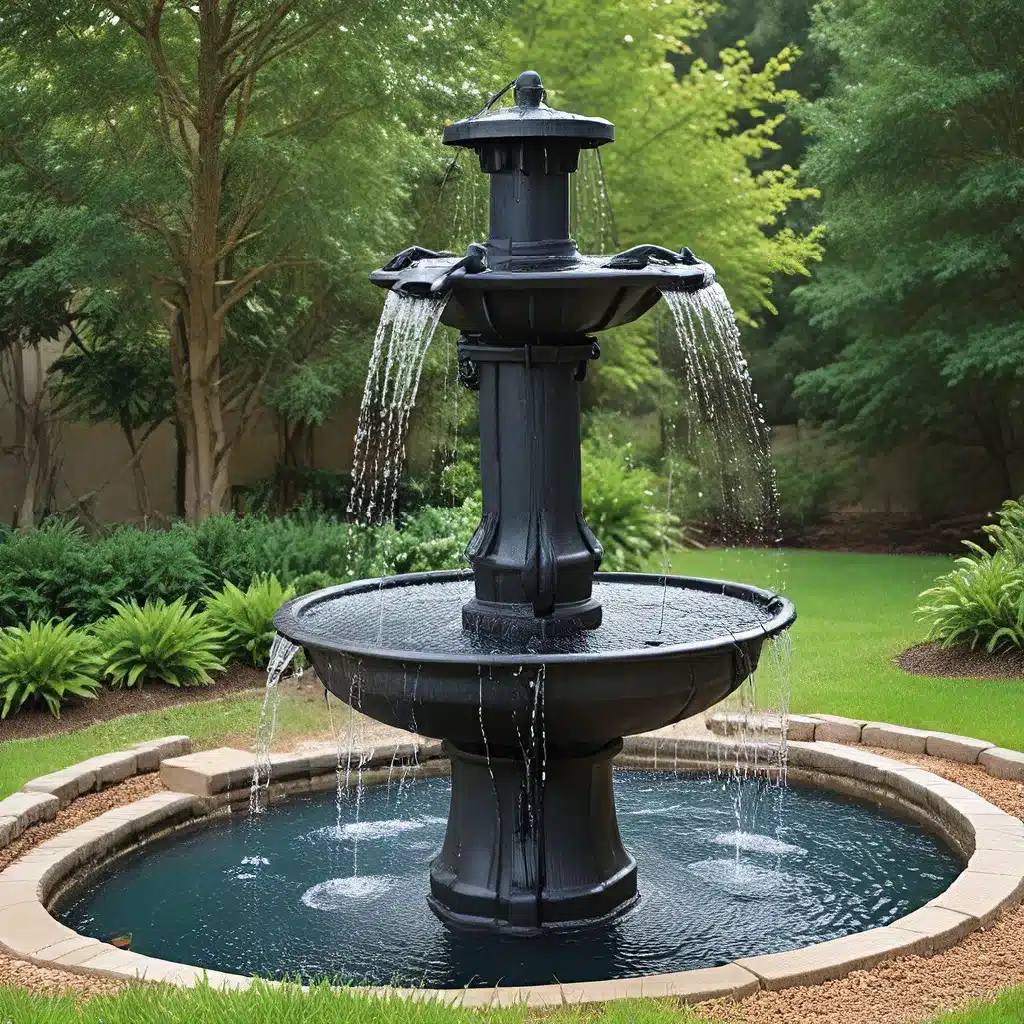
Fountain Design Essentials – Welcome to Fountain Lights
Fountain Design Essentials – Welcome to Fountain Lights

As a passionate fountain enthusiast, I’ve always been fascinated by the intricate workings of these mesmerizing water features. But let’s be honest, when it comes to fountain pumps, efficiency is often an afterthought. We get so caught up in the visual spectacle that we sometimes overlook the crucial role these unsung heroes play in keeping our fountains running smoothly. Well, my friends, the time has come to shed some light on the art of mastering fountain pump efficiency.
In this comprehensive guide, we’ll dive deep into the world of fountain pump performance, exploring the key factors that influence efficiency and longevity. From raw water analysis to filter bed design, pump selection, and pipeline configuration, we’ll uncover the strategies and best practices that will help you optimize your fountain’s performance and keep it running like a well-oiled machine.
The first step in achieving fountain pump efficiency is understanding the quality of the water that feeds into your system. This comprehensive raw water analysis is the foundation upon which we’ll build our filtration and pump selection strategies.
By carefully examining the contaminants, pH levels, turbidity, and chemical composition of the water, we can identify the specific challenges we need to address. This information will guide us in choosing the right filtration media and pump type to ensure your fountain operates at peak efficiency.
Remember, every fountain is unique, and the water source can vary greatly. Conducting a thorough raw water analysis is crucial to designing a filtration system that truly meets your fountain’s needs.
The heart of any efficient fountain filtration system lies in the filter bed. This carefully crafted arrangement of filtration media is responsible for removing contaminants and ensuring the water is clean and clear before it reaches the pump.
When designing an effective filter bed, we need to consider several key factors:
Media Selection: Choose the right combination of materials, such as sand, gravel, activated carbon, or specialized resins, based on the specific contaminants identified in your raw water analysis.
Layer Configuration: Arrange the media layers in a way that maximizes contaminant removal, typically with coarser materials at the bottom and progressively finer media above.
Bed Depth: Ensure sufficient depth for each media layer to enhance contact time and filtration efficiency.
Flow Rate: Design the filter bed to accommodate the desired flow rate without causing channeling or media displacement.
By optimizing your filter bed design, you’ll not only improve the quality of the water entering your fountain pump but also extend the life of your filtration system and reduce maintenance requirements.
Choosing the right pump for your fountain is crucial for maintaining efficiency and reliability. The pump is responsible for circulating the water and providing the necessary pressure to ensure optimal performance.
When selecting a pump, consider the following factors:
Selecting the appropriate pump not only enhances the overall efficiency of your fountain system but also helps prevent costly breakdowns and maintenance issues down the line.
The design and configuration of your fountain’s pipelines play a vital role in ensuring efficient water flow and minimizing pressure drops. Properly designed pipelines can improve the performance and longevity of your filtration system.
Key considerations in pipeline configuration include:
By paying close attention to pipeline design, you can enhance the overall performance and reliability of your fountain filtration system.
Valves are essential components that control the flow of water within your fountain system. Proper valve integration contributes to the system’s efficiency, flexibility, and ease of maintenance.
When incorporating valves into your fountain setup, consider the following:
Effective valve integration ensures smooth operation, easy maintenance, and improved control over your fountain’s filtration process.
The materials used to construct your fountain’s filtration vessels play a critical role in the system’s durability, safety, and compatibility with the water being treated. Choosing the right materials is essential for ensuring long-term performance and reliability.
When selecting vessel materials, consider the following:
Common materials for fountain filtration vessels include stainless steel, fiberglass-reinforced plastic (FRP), and high-density polyethylene (HDPE), each offering unique advantages based on the application.
Proper media loading is essential for the effective operation of your fountain’s filtration system. Incorrect loading can lead to issues like channeling, media displacement, and reduced filtration efficiency.
To ensure effective media loading, follow these steps:
By following these media loading procedures, you’ll maximize the performance and longevity of your fountain’s filtration system.
Maintaining the efficiency and reliability of your fountain’s filtration system requires skilled operators who understand the system’s components, processes, and troubleshooting techniques.
Essential operator skills include:
Well-trained operators are crucial for maintaining the efficiency, reliability, and safety of your fountain’s filtration system.
The performance of filtration media and systems can vary significantly based on the specific application and operating conditions. It’s essential to tailor the filtration system to meet the unique requirements of each fountain application.
Consider the following application-specific factors:
By understanding the unique requirements of each fountain application, you can design and implement an effective and efficient filtration system that delivers superior results.
Mastering fountain pump efficiency is a multifaceted endeavor that requires a comprehensive understanding of the various components and processes involved. From raw water analysis to filter bed design, pump selection, pipeline configuration, valve integration, and media loading procedures, each element plays a crucial role in ensuring the optimal performance and longevity of your fountain system.
By investing the time and effort to address these critical factors, you’ll not only enjoy the mesmerizing visual display of your fountain but also reap the benefits of reliable operation, reduced maintenance costs, and enhanced water quality. Whether your fountain is for drinking water, decorative purposes, aquatic life, or wastewater treatment, mastering the art of efficiency is the key to creating a truly captivating and sustainable water feature.
So, take the time to explore the wealth of resources available, consult with industry experts, and embark on your journey to mastering fountain pump efficiency. Your fountain will thank you for it, and you’ll be the envy of all your neighbors!
And remember, if you’re ever in need of expert guidance or top-notch fountain lighting solutions, be sure to check out fountainlights.net. They’ve got the knowledge and the products to help you take your fountain to new heights of efficiency and beauty.
Share to :
Subscribe to our newsletter for the latest in fountain design, innovative lighting ideas, and exclusive tips straight to your inbox. Join the community shaping the future of water features.

Rapid delivery to your doorstep.

Excellence in every product.

Great value for your investment.

Assistance at any hour.
Fountain Lights — Illuminating creativity in every splash!
Copyright © 2023. All Right Reserved